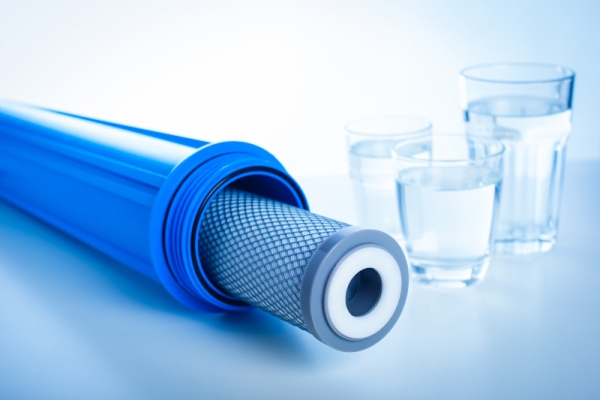The more important question: What’s coming through the pipe during a park, campsite or gas station hookup?
You may have a filter system on your rig’s water lines, and that’s good. But why bring nasty water onboard in the first place? And you better believe it’s possible to import pollutants from any type of water supply when you fill up at an unfamiliar public source. Some of these water systems supply you with municipal water, while others supply groundwater from wells. Either can be a source of pollutants. All of our RV lots have water and electrical hookups and our water supply comes directly from the crystalline rock aquifers in the surrounding mountains.
What Are Public Water Systems?
The federal Environmental Protection Agency reports that pollutants in public water systems can be numerous and quite toxic. The concern for campers chiefly is what the EPA calls Transient Non-Community Water Systems, which are considered public water systems.
The Centers for Disease Control says these are systems that provide water to the public in places such as campgrounds, service stations, parks, resorts, restaurants and motels with their own water systems, and where people do not stay long. Anyplace with at least 15 connections or that serves 25 or more different customers a day at least 60 days a year is a public water system under EPA regulations.
Such itinerant systems are more numerous than you might think, with 84,744 nationwide in 2020, according to the CDC.
Required Testing
Transient public water systems must perform periodic tests against E. coli and a long list of other contaminants, and are required to file an annual report. That helps to ensure if not guarantee customers that the drinking water they take on is safe.
Pollutants can originate from sources as diverse as human waste, which gets treated before being emptied into surface streams; industrial waste, which often contributes heavy metals; and agricultural chemicals, which run off and infiltrate fields and are more common in well water.
When you pull into a filling station five states from home, you have no way of knowing what’s in the water. It’s best to purify the water as much as you can before you bring it into your fresh water tank and store it for bathing, cooking and drinking.
Inline Filters
For any camper, initial filtration should be at the hookup. That’s not so hard when you own your camper and carry an inline filter and fittings wherever you go. For those who rent RVs, it’s a good idea to get an inline filter and keep it handy, maybe as part of a travel kit that includes the filter, fittings (including a Water Bandit), charging equipment for electronics, flashlights and emergency gear. Any filter should screw right onto standard hookup faucets and hoses to you RV.
The inline filter (example: Camco TastePure) will trap many of the particulates, such as sediment, and chemicals and bacteria that might be in the water, making water look, taste and smell better.
Filter performance is measured in how small the particulates are that it can remove, measured in micrometers, commonly called microns, or the symbol μ. A micron is 0.000039 inch, about 1/70th of the thickness of a human hair. The smaller the number of microns, the more effective the filter. For example, a filter rated at 0.5μ is more effective than one rated at 10μ. One warning on micron ratings: The smaller the micron rating, the lower the flow rate is likely to be in gallons per minute (gpm), meaning longer fill times. Look at both ratings and find a pairing that satisfies you.
RV Water System Filters
To stay safe, always filter the water that comes from your fresh water tank. A system filter—sometimes multiple filters—will remove many of the contaminants that might have made it into your tank. For example, the Essential Whole RV Water Filter System from RVwaterfilterstore.com costs $139, has two filter canisters, and removes contaminants as small as 0.5 microns, and cysts that make up parasites such as giardia. Replacement filters are available.
If you install a system filter, make sure it’s accessible, because you’ll have to replace the filters periodically.
Drinking Water Filters
You can take one last step in purifying drinking water: Use a filtered pitcher or bottle. Brita, for instance, makes a 6-cup Soho Pitcher with Longlast Filter that reduces chlorine, cadmium, mercury, lead and particulates, among other contaminants. The filter in the $29 plastic pitcher is designed to last six months, so if you’re using it for only a few weeks at a time, it should last quite a bit longer. Replacement filters are available.
You can also buy filtered water bottles. They protect if you can’t filter at the hookup or lack an RV water system filter.
Things To Remember
Other things to keep in mind:
- Make sure filters, filter systems and connectors are rated lead free, which is anything with less than 0.25 percent lead content. The lower the rating, the better.
- A hookup filter won’t protect you from high water pressure. Consider attaching a water pressure regulator valve. Connect it to the water inlet to keep pressure in your RV system from getting too high.
- A Water Bandit will help to ensure that you can hook up to faucets that are not otherwise mated to you filter or hose, or that may have stripped threads. A flexible fitting, the Water Bandit has small ribs to grip worn connections.
- Seal fresh-water devices in clean bags so they don’t become contaminated during storage.
- Keep a threaded right-angle connection for when it’s needed to reduce stress on the inline filter or hose when filling up.
- Be careful not to overfill your tank.
